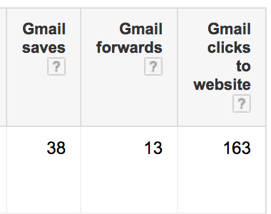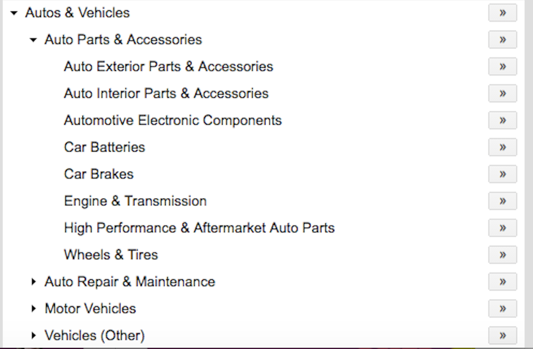By now, you’ve probably heard of Gmail ads, or even tested them, as they’ve been around for several years. My early experiences with Gmail ads were a bit of a struggle, but as the product evolved there have definitely been some changes that have helped lead me to success with this ad unit. The biggest challenge with Gmail ads over traditional search is ensuring that you’re showing the right ads to the right people. Once you’ve assured that, you’ll see that Gmail can actually be an effective marketing tool. In this post, I am going to share some of the strategies I’ve used to help achieve desirable results.
Before we talk about strategies, I want to set one thing straight. As with any new ad unit that you’re testing, it’s important to set expectations. Gmail advertising is not the same as search advertising; the user intent is different from search. Therefore, we need to establish different criteria to gauge success. As I said earlier, our goal with Gmail is to reach the right people with the right message. However, because this isn’t traditional search, we won’t know if we’re hitting them at the right time. With that said, Gmail ads can still be really effective if we take the time to employ targeting strategies that strive to reach the most targeted users possible. When I think about the performance of my Gmail ads, I integrate the Gmail metrics columns in the AdWords interface to really get a sense of how users are engaging with the ads. For those who may not be familiar, through Gmail metrics, we are able to see the number of saves, forwards and clicks that the Gmail ads received. Knowing that Gmail ads are a little higher up in the funnel, looking at these metrics can provide good insight on how your Gmail ads are resonating with your audience.

Competitor Conquesting
One of the biggest challenges I’ve had with Gmail ads is understanding if I’m truly targeting the right audience. Using solely keyword targeting was sometimes a bit broad, so I needed to fine-tune things. Enter the competitor conquesting strategy. Using this strategy, you can use your competitors’ domains as your targeting method. In other words, you can target your ads to show whenever a Gmail user receives an email from one of your competitors. I like this approach because it really helps bring in an audience who has a strong potential to be interested in your product or service. In fact, through this approach, I’ve seen CTRs as high as 33%, which is a good indicator that the audience I was reaching was truly interested. While it’s really appealing to simply upload a list of competitor domains, I urge you to also take a moment and make sure that your list is comprised of the competitors who are most closely related to your business. For example, if you only sell coffee pots and kitchen electrics, you probably don’t want to list a large department store as one of your competitors, as they sell coffee pots and a whole lot more. In the end, you could wind up paying for a lot of irrelevant traffic.
In-Market Audiences
When targeting your Gmail ads, wouldn’t it be great to reach people who are determined to be in-market for purchasing a product like yours? With Gmail ads, we are able to do just that. You might already be familiar with in-market audiences, but for those who aren’t, it’s where Google’s algorithms identify people who are ready to make a specific purchase based on the type of emails they are receiving. Let’s say, for example, that you sell auto parts. Using in-market audiences, you’ll be able to show your Gmail ads to those who are in-market to make an auto parts purchase. With almost 500 categories to choose from, using in-market audiences can be a powerful tool to use when fine-tuning your Gmail targeting. While there isn’t a guarantee that these users are absolutely ready to make a purchase, implementing in-market audiences can bring us a little bit closer to reaching a targeted Gmail user.

Similar Audiences
Using a Customer Match list, you can use Google’s Similar Audiences feature in your Gmail targeting as well. In order to do this, you would upload a list of your current customers into AdWords and the system will use it to find people who have displayed similar behavior online. Doing this allows you to go beyond your Customer Match list and find new people who may not know of your product or service. Keep in mind that this isn’t perfect targeting and your similar audience probably won’t perform the same way that your other targeting methods do. Still, there is value in this approach, as you are reaching out to users who exhibit similar behavior to your current customers.
Final Thoughts
When it comes down to it, Gmail ads can be an effective way to interact with a targeted audience beyond your traditional search efforts. Using some of the tips outlined above can help make the effort worthwhile, as targeting well is the key to success when using Gmail. With a focus on competitors, In-Market audiences and Similar Audiences, you can show your Gmail ads to users who are likely to have some interest and possibly proceed. Though we will always have the issue of user intent with Gmail, our visibility into Gmail saves, forwards and clicks can help shed light on how effective our advertising efforts actually are.



